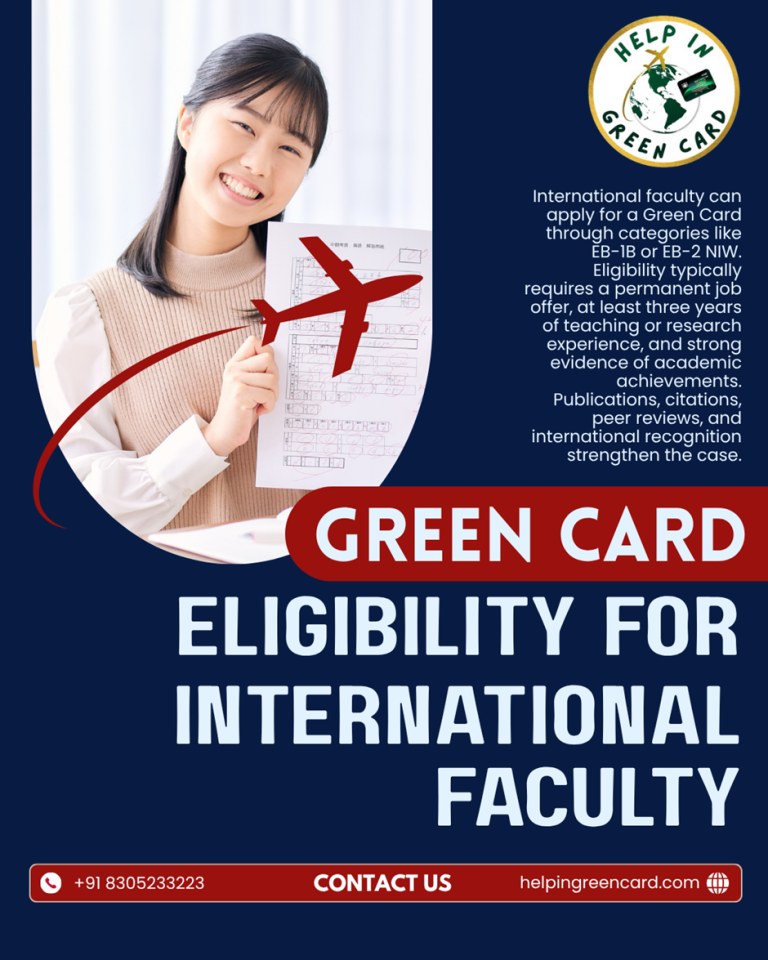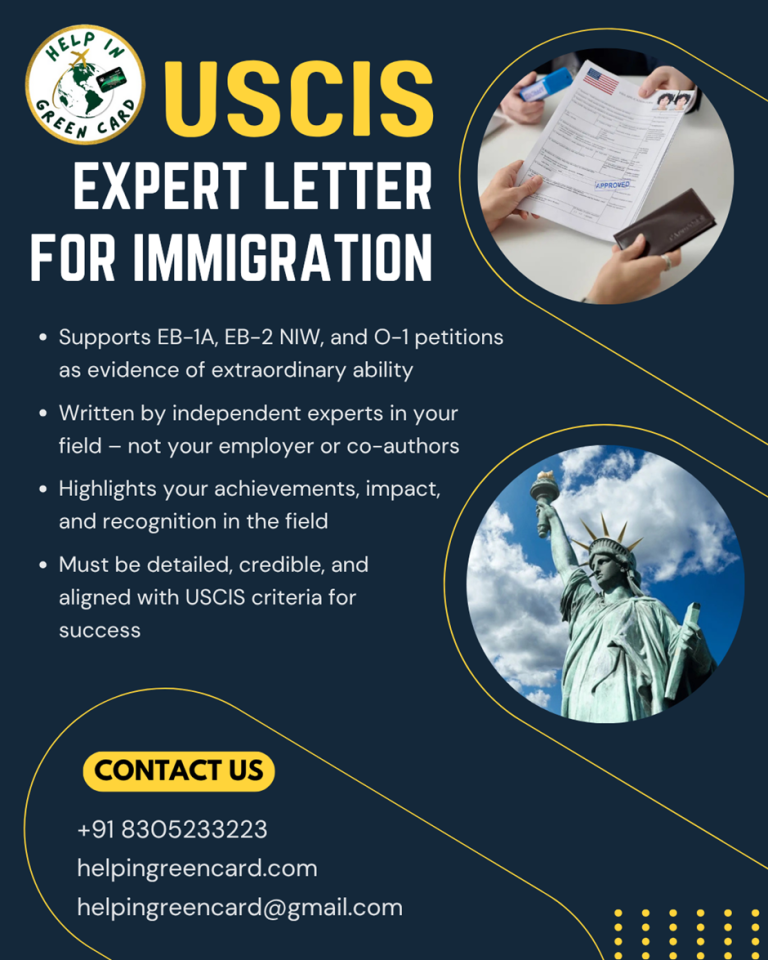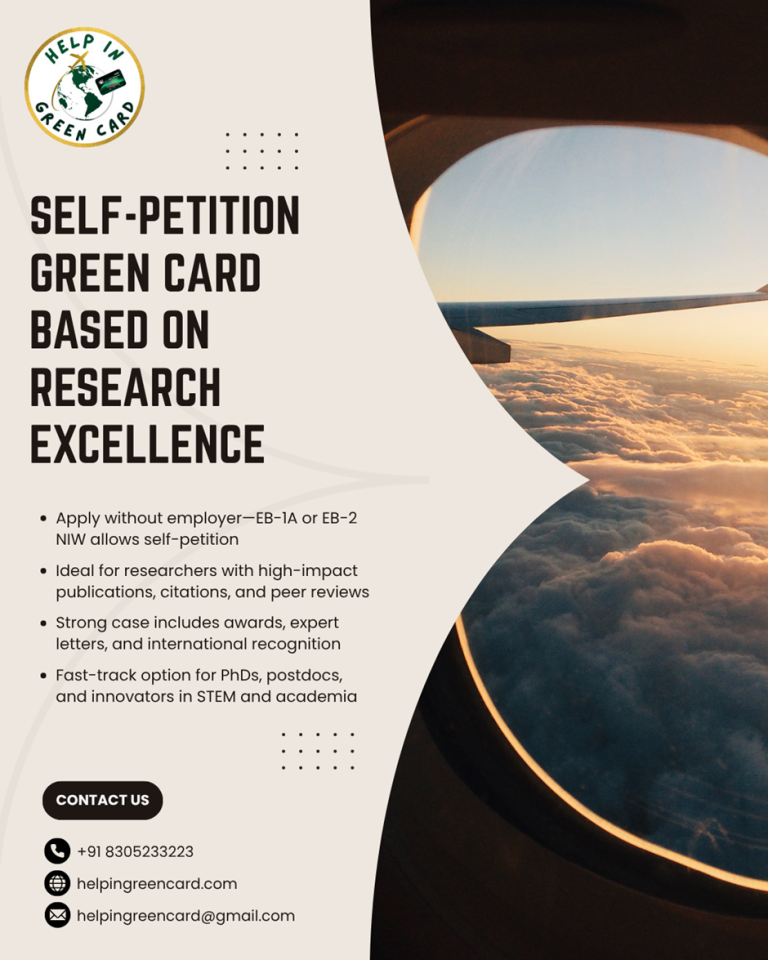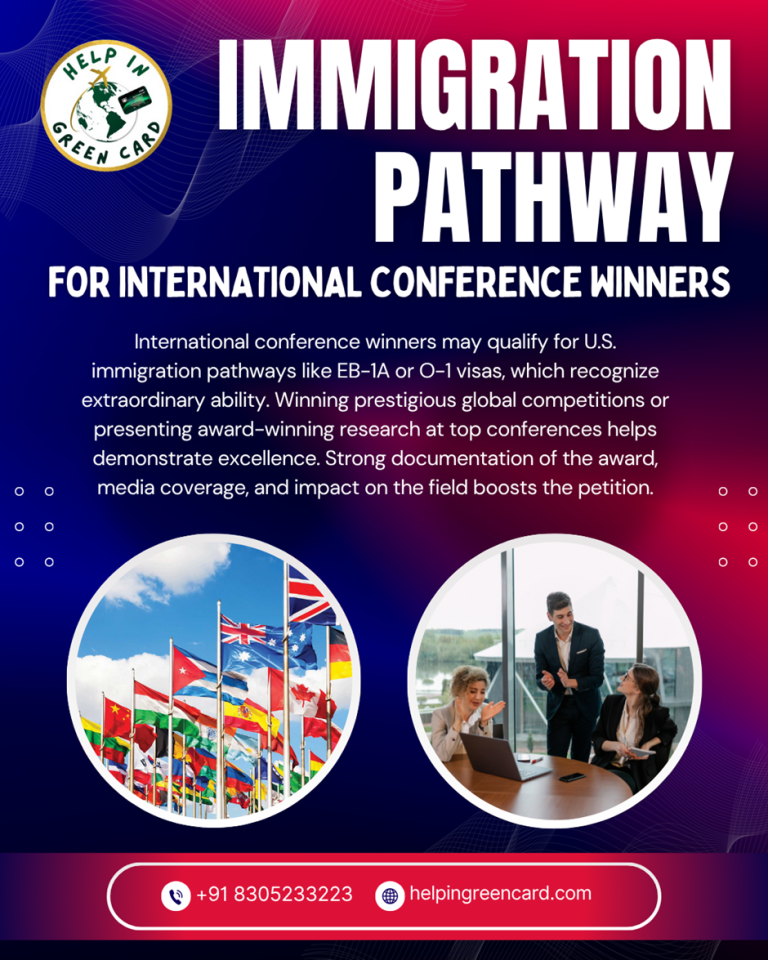

The American immigration law contains a number of employment-based visa categories, none of which, however, can be as distinctive and exclusive as the EB1A green card. The visa is targeted at persons of exceptional abilities and enables professionals, artists, scholars and others to pursue a green card without the need of an employer. We at HELPINGREENCARD make it very simple to you, step by step.
What is the EB1A Visa?
EB1A is an immigrant visa that is reserved to people who have extraordinary ability in the fields of sciences, arts, education, business, or athletics, by means of national or international acclaim over a prolonged period. EB1A green card is suitable to independent professionals and researchers because it does not require a job offer, unlike many other green cards based on employment.
Flow Chart EB1A Step-by-Step
Knowing more about the EB1A process can relieve the confusion and waiting time. The following are the major steps in the EB1A petition process, according to our visual flow chart.
Step 1: Base Profile Analysis
Your career starts with a professional analysis of your profile. Your accomplishments and qualifications are evaluated by an immigration specialist who decides whether you can match three or more of ten EB1A elements provided by USCIS. These can be significant prizes, academic publications, creative works, evaluation of the work of others, and so on.
Step 2: Preparation and collection of Documents
After being assessed as eligible, the second step involves getting ready to provide good supporting documents. This will be your new resume, recommendation letters, evidence of your publications, media features, highly attractive salary, and whether you belong to any associations which demand exceptional performance.
Step 3: The I-140 Petition filing
Your attorney files Form I-140 (Immigrant Petition for Alien Worker) with the USCIS having prepared documents. This version establishes that you qualify under EB1A category. Also, you may choose to use Premium Processing, which ensures a decision is made within 15 calendar days.
Step 4: USCIS Review and Decision
Once filed, USCIS gets to review the petition. You can get:
An approval notice
A Request for Evidence (RFE) in case some extra documentation is required
A rejection, in case the petition does not correspond to the standards
When it is a solid petition supported by an expert, odds of an RFE or a denial are extremely low.
Step 5: Green Card Final Step
After the approval of I-140, the final step can be done:
In the U.S., you should file Form I-485 (Adjustment of Status)
Outside the U.S.? Then do Consular Processing through the U.S. Embassy in your home country
What Makes EB1A a Better Choice than Other Visas?
Good things about the EB1A include:
No job offers or employer sponsorship needed
Quicker processing speed than other employment-based categories
Self-petitioning capability
Good avenue to permanent residency (green card)
It is because of this that it is considered one of the most immigrations (in the U.S), flexible, and powerful immigration options for top-tier talent.
The Way HELPINGREENCARD Can Help You
We at HELPINGREENCARD give you end to end guidance in your EB1A process. Whether it is profile assessment, documentation plan, and petitions writing or RFE response, our seasoned team will make sure that your case is represented in the best light possible.
We have assisted many professionals, researchers and artists to obtain their U.S. green card through EB1A.
Contact Us Today
Phone: +91-830-5233-223
Email: helpingreencard@gmail.com
Website: www.helpingreencard.com




